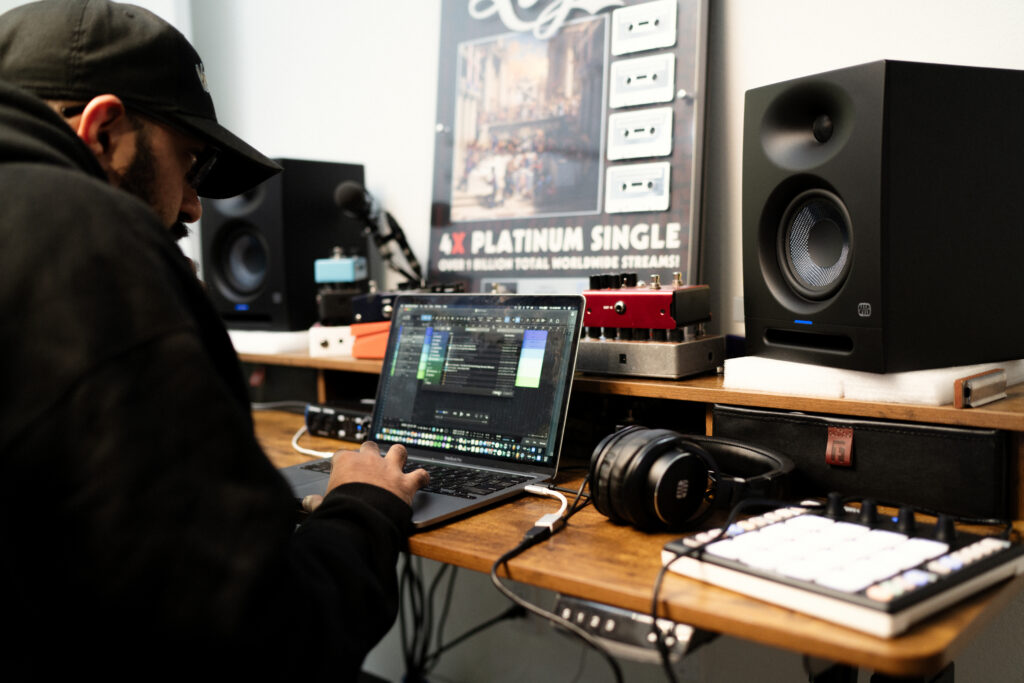Category Archives: Artist
Brandon Ellis | Take the Leap | Quantum Audio Interfaces
The Black Dahlia Murder guitarist and New Jersey native talks about taking his leap.
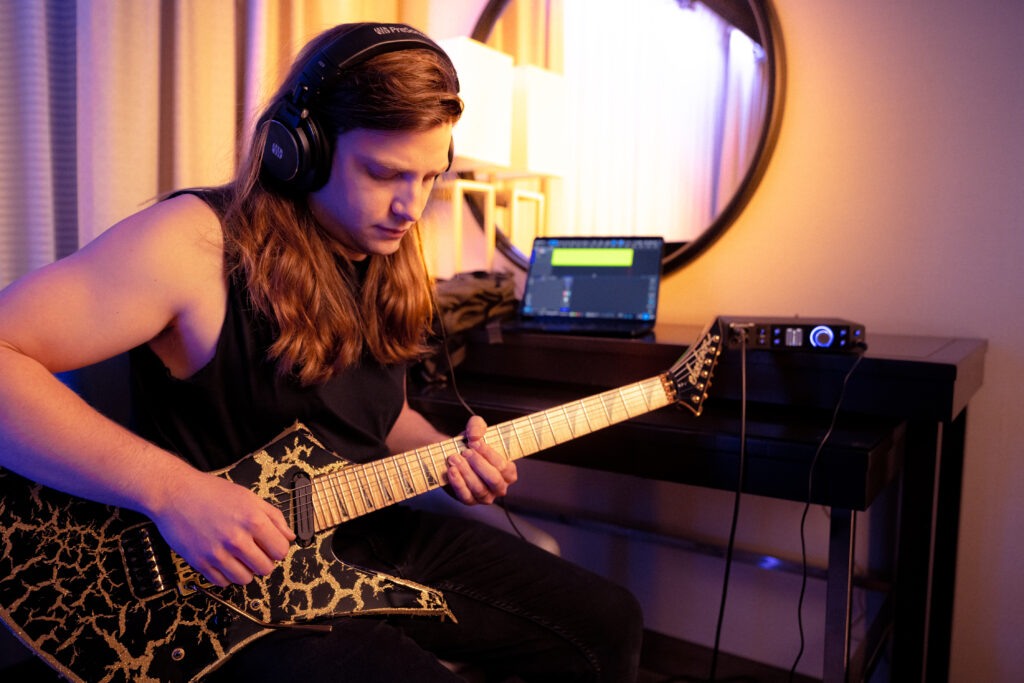
A life in music requires passion, creativity, dedication – and for many creators, their trajectory can be traced back to a defining moment that changed everything: the moment they took the leap.
New Jersey native Brandon Ellis is the lead guitarist for the legendary American melodic death metal band, The Black Dahlia Murder. Renowned for his technical prowess and blisteringly fast solos, Brandon’s virtuosic style is a rich sonic tapestry of classical influences, archetypal 80s shred, and mind-bendingly modern techniques that continue to push the boundaries of extreme metal into uncharted territory.
Watch as Brandon records and re-amps a scorching new riff through the all-new PreSonus Quantum HD 2 Audio Interface, and talks about his early experiences with music, the necessity of discipline, and paying tribute to the greats that came before him.
“Since before I can even remember, I’ve been doing whatever I could to experience rhythm and music.” These words from Brandon Ellis encapsulate the essence of his musical journey: an innate and indomitable passion for expression. As a child, he drummed beats around the house, even using his teeth as makeshift percussion instruments, all while immersing himself in classic rock that sparked his desire to pick up the guitar.
“I was using music to escape. To experience new emotions. I wanted to know why a certain chord or scale could make me feel the way it did.” Ellis’s curiosity and thirst for understanding ultimately led him to seek out the secrets of guitar virtuosos like Eddie Van Halen, Yngwie Malmsteen, Mattias Eklundh, and Blues Saraceno. He pursued music theory rigorously, jammed with fellow musicians who shared his passion, and sought mentorship from some of the greatest guitarists in the world.
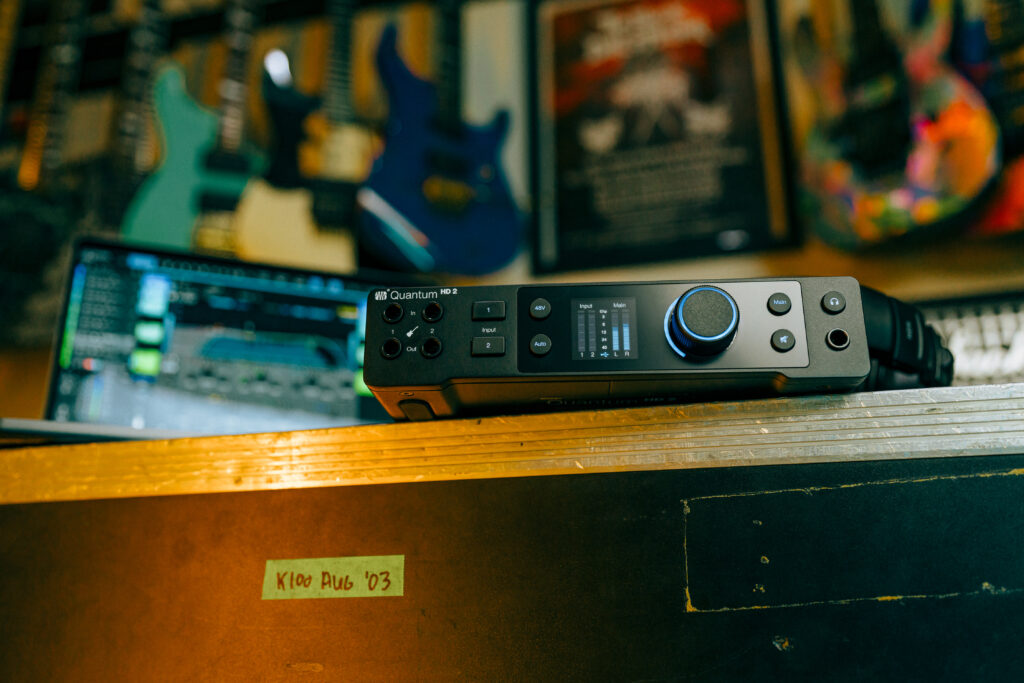
In spite of his passion, Ellis wasn’t planning on pursuing it as a career. So he enrolled in college, initially studying business. But as time went on, Ellis couldn’t ignore his calling. “All I wanted to do was play music, so when I was a freshman in business school and got the call to go on tour, the decision was obvious. I took the leap.” The opportunity to tour catapulted him from academia to the stage, and he never looked back.
From his humble beginnings drumming beats on his teeth to commanding stages worldwide, Ellis’ journey is a testament to perseverance and passion. His path, paved with music theory and hard won wisdom from guitar legends, embodies the spirit of relentless pursuit. Whether shredding with The Black Dahlia Murder or creating exclusive guitar lessons via his Shred Light District Patreon, Ellis continues to mesmerize with his technical prowess and deeply emotive solos.
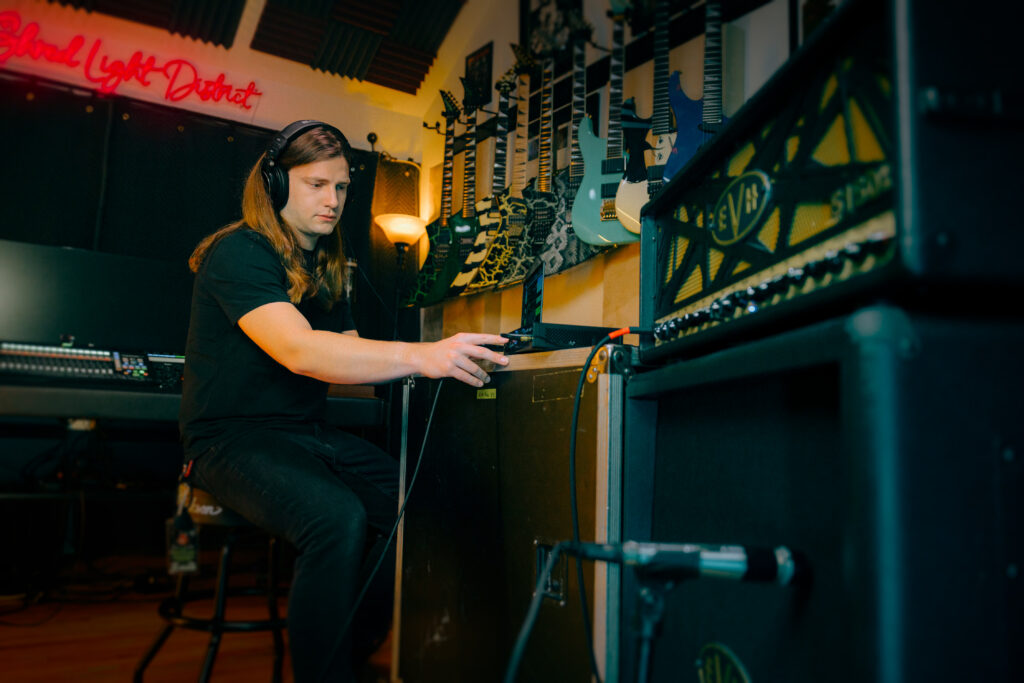
Brandon’s story reminds us that pursuing our passions often requires courage and determination. It’s a journey where each chord strummed and every note played becomes a part of a larger narrative—a narrative of rhythm, melody, and the unwavering pursuit of musical mastery.
PreSonus products used: PreSonus Quantum HD 2 USB-C Audio Interface.
Meet the all-new family of Quantum USB-C Recording Audio Interfaces, and get in-depth information about the entire product line here.
Mad Keys | Take the Leap | Quantum Audio Interfaces
The self-taught multi-instrumentalist and St. Louis native talks about taking his leap.
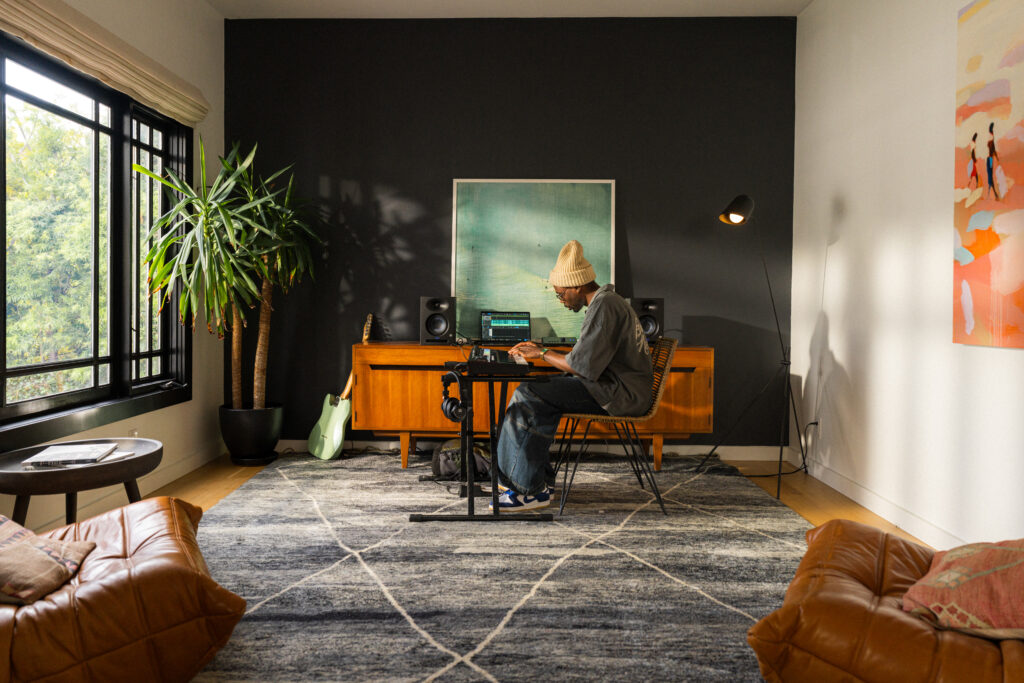
A life in music requires passion, creativity, and dedication – and for many creators, their trajectory can be traced back to a defining moment that changed everything: the moment they took the leap.
St. Louis native Mad Keys is a multi-instrumentalist and alt hip-hop producer whose soul-heavy sound has led to two full-lengths, four EPs, and a substantial selection of singles drenched in lush melodics and groove-heavy rhythms. As a self-taught musician, the key takeaways from Mad Keys’ musical journey have been “the importance of perseverance, the value of taking risks, and the power of community.”
Watch as Mad Keys performs his unreleased track “Powered” through the all-new PreSonus Quantum ES 4 audio interface, and talks about his creative process, teaching himself to play piano, and how cooking up a song is a lot like brewing a great cup of coffee.
When it comes to writing music, Brandon McCadney – aka Mad Keys – aims to strike a balance between time-honored processes and a fundamental openness to whatever excites him at the moment. “I’m definitely a process-driven person, and that shows up in a lot of areas in my life. But my process changes a bit each time I sit down to create. It truly depends on what I’m inspired by at the moment.”
It’s a balanced, contemplative approach that Mad Keys is quick to compare with another of his favorite daily processes. “For me, making a great cup of coffee is kind of like sitting down to create a song. In both cases, I have a routine that requires me to have patience and focus.”
Keys was raised in a musical family and learned to play violin when he was just 9 years old – a move that would introduce him to classical elements of discipline and melodic instrumentation at a very early age. But it wasn’t until high school that he discovered hip-hop and jazz. “I was listening to what everyone else was listening to: Gucci Mane, Jeezy, and Lil Wayne. I’m thankful for my brother and sister because they introduced me to artists like OutKast, N.E.R.D., Kanye, Lupe, and Santigold.”
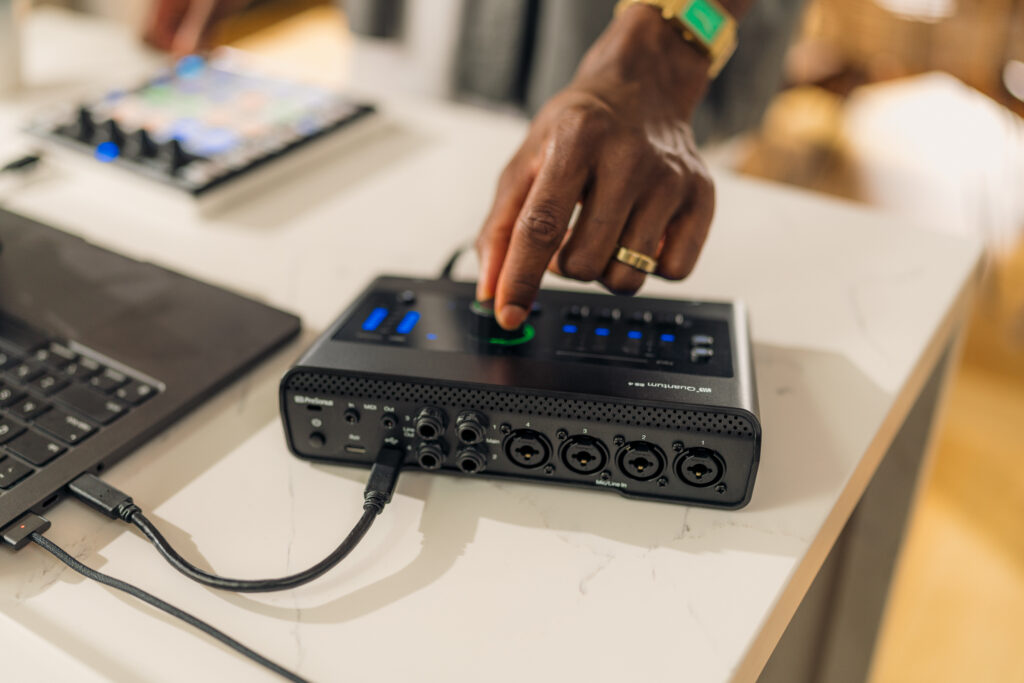
One day, he heard a friend playing Coldplay’s “Trouble” on piano, and was immediately captured by the sound. When he asked his friend how he figured it out, “he told me that he learned how to play that song from a video on YouTube. So, I went home, turned on this old keyboard, opened up the tutorial, and learned that song. It was at that moment when I said ‘Yo, I can learn how to play piano!’”
Being an independent artist certainly has its share of ups and downs, and none more so than during the global pandemic. “There was a pivotal moment in 2020 when I almost gave up on music. My wife and I had just moved to a new city in the middle of the pandemic, and I felt lost. I remember telling bae that I might put music on the back burner. But that same night, I received several signs urging me to persevere. I decided to start creating visuals of myself making music in my room, not knowing where it would lead. I had no idea that the next 4 years would lead to building a growing community of supporters, producers, and creatives.”
Four years and several soulful albums later, Mad Keys continues to grow and develop as a musician. But his aspirations go far beyond mere technical improvement, serving a deeper purpose as a vehicle for personal growth and a daily reminder of the power in community: “My sonic leap wasn’t just about honing my talent: it was about learning to bet on myself and embrace the unknown.”
PreSonus products used: PreSonus Quantum ES 4 USB-C Audio Interface, PreSonus ATOM Controller.
Meet the all-new family of Quantum USB-C Recording Audio Interfaces, and get in-depth information about the entire product line here.
KOTA the Friend & RMB Justize | Studio One x TuneCore
Watch the independent artist and Wiz Khalifa producer cook up a song in a single day
Imagine meeting someone for the first time and making a song together. That’s what independent artist KOTA the Friend and Wiz Khalifa producer RMB Justize did, producing a complete track at PreSonus HQ in just one day – with Studio One as their “one-stop shop [for] production, vocal recording, [and] mastering,” and TuneCore to “release the music, put a cool picture on it, put our name on it, and let the world hear it.”
Watch the making of their track “She’s Gone” below, and read on for more behind the scenes content.
Everyone loves a good collaboration – but working with others can be a challenge, especially when you’re a fiercely independent artist like Kota the Friend: “I record myself, make my own beats a lot of the times, I even mix myself sometimes.” It’s a boldly autonomous philosophy that informs his artistic approach and extends to the process of getting his music out into the world: “I’ve been able to sustain success as an independent artist just by constantly putting out music, putting out content, feeding the fans, and really going out on the road, going out on tour. We go to Europe every year. You know, people listen to the music and they’re vibin’ with it all year – in their houses, in their cribs, in their cars, on their way to work. And so we try to be there for them.”
“I even mix myself sometimes,” he says, but even a fiercely independent philosophy has its limits: “then I send it off to somebody who can really get the job done.” Enter GRAMMY-nominated producer and in-house Taylor Gang engineer RMB Justize. In addition to his star-studded production credits, RMB Justize was also an early adopter of TuneCore: “I’ve been using TuneCore since 2013. Once I realized how simple it became to just release the music, put a cool picture on it, put your name on it, and let the world hear it – it got real.”
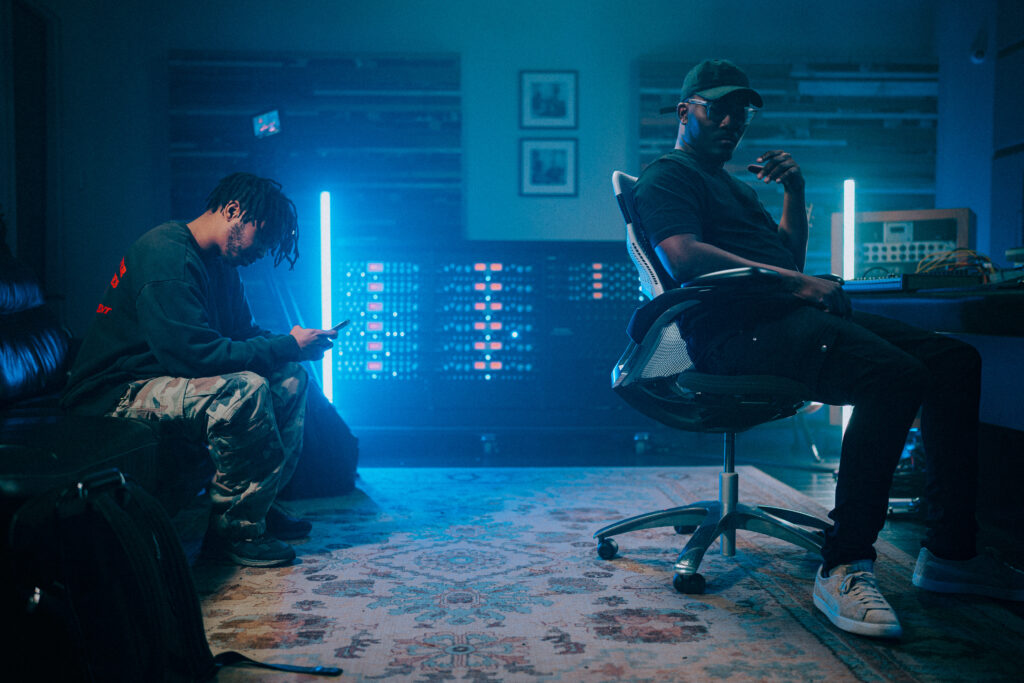
In just a few short hours, these total strangers came together to produce a vibey, low-key masterpiece – recording, mixing, and mastering in Studio one, and releasing it on TuneCore without a label ever being involved. For independent artists, the simplicity, efficiency, and financial incentives are simply unbeatable: “Because TuneCore exists, I was able to release music on my own without a record label. And for us, especially years and years ago, that was monumental. For us to be able to just upload and put out music and get some kind of money from it…they gave me the opportunity to monetize off of my music when that opportunity wasn’t really around. And as artists, sometimes we forget that that’s what it’s about. And now we have an opportunity to reach our fans and get some money, so shout out to TuneCore. It’s always love to TuneCore.”
“She’s Gone” by KOTA the Friend & RMB Justize now streaming everywhere.
Listen Now: Spotify, Apple Music
With the integration of TuneCore within Studio One, users can now get their music across the finish line and into TuneCore’s hands for distribution without ever closing out of their DAW. To learn more about how to effectively distribute your music with TuneCore, check out our Distribution 101 article. And for a limited time, all existing and new Studio One+ subscribers get 50% off their first year of TuneCore Rising, Breakout, or Professional plans. Learn more.
PreSonus products used: Studio One, PreSonus HD9 Professional Monitoring Headphones.
Louis Michot | Take the Leap | Quantum Audio Interfaces
The GRAMMY-winning fiddler, songwriter, and New Orleans native talks about taking his leap.
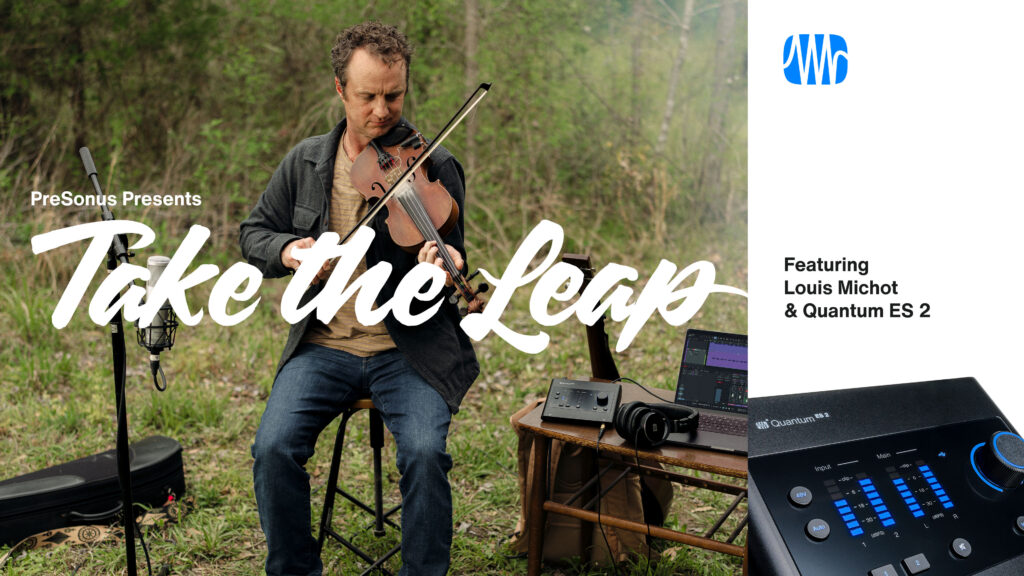
A life in music requires passion, creativity, dedication – and for many creators, their trajectory can be traced back to a defining moment that changed everything: the moment they took the leap.
Louisiana native Louis Michot is the fiddler, songwriter, and lead vocalist for the GRAMMY award winning Lost Bayou Ramblers. With more than 20 albums under his belt – and a passion for Louisiana French, local folklore, and environmental sustainability – Louis’ music career both honors and pushes the boundaries of the Louisiana French music traditions.
Watch as Louis performs his track “Les Beaux Jours” (“The Good Days”) through the all-new PreSonus Quantum ES 2 audio interface, and shares his story about growing up with Cajun music, his role as a cultural ambassador, and taking the leap with his first solo album.
Louis Michot might be best known as the fiddle player and lead-singer of the Lost Bayou Ramblers – but what truly fuels his career as a musician is Louisiana French, local folklore, and sustainability in the fastest disappearing landmass in the world: “Louisiana is beautiful and complex, both geographically and culturally,” Louis says. “The diversity of cultures that are intertwined here have given birth to some of the most popular music in the world, and the ever-changing landscape inspires people to keep creating new expressions: from Zydeco to Mardi Gras Indians, Cajun to country, and everything in between.”
Growing up surrounded by Cajun music seemed “normal” to Louis. “I thought every kid had an older generation around that played accordion and fiddle music and sang in French. But when I started playing guitar at 12 years old and learned all the Rock’nRoll and Blues standards, I realized that the Louisiana French music my family plays was very different from popular music.”
Recognizing his unique cultural inheritance, Louis decided to get out into the world and learn French and the fiddle for himself. “I traveled and hitchhiked throughout South Louisiana and Eastern Canada, learning the language with every French speaker I could meet, and honing my skills on the fiddle by playing on the streets.”
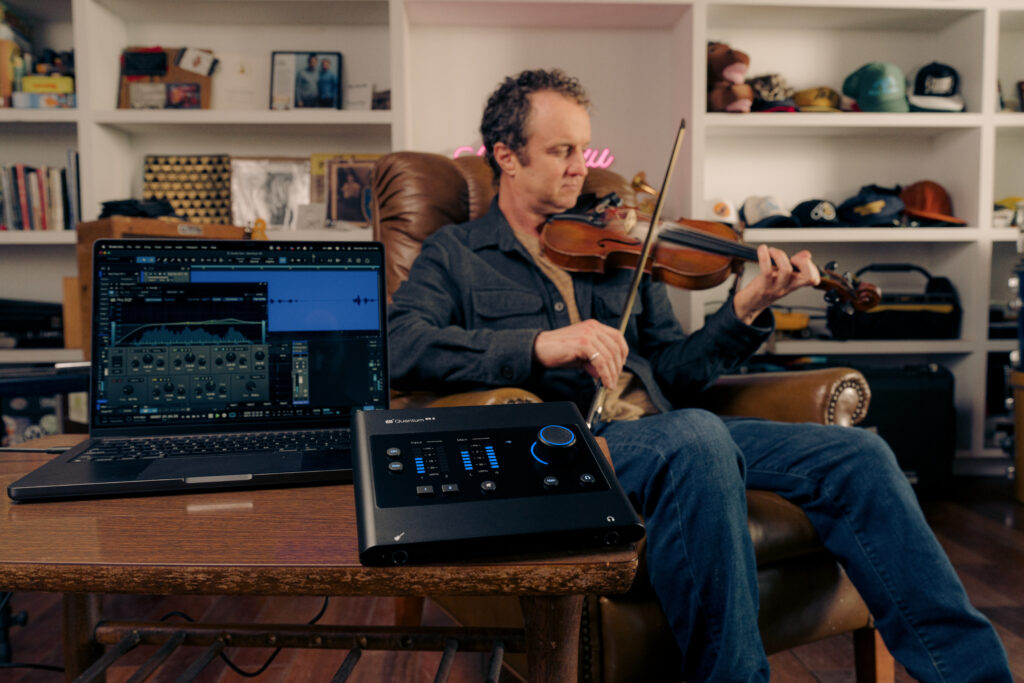
Inspired by his experiences at home and abroad, Louis started playing standup bass with the family band before taking the leap and founding the GRAMMY-winning Lost Bayou Ramblers with his brother, Andre. “After a decade of pushing the traditional music to the edge, we started melding the Cajun music we grew up with, and the Rock’n’Roll we learned to love, and playing Louisiana French music in a way that truly inspired us.”
23 years and two GRAMMYs later, Louis decided it was time for another leap of faith, and began work on his first solo album. “When I finally decided to dedicate myself to releasing a solo album, it was because I needed to get this music out of my head and my heart, and wanted to explore the scary freedom of starting with an empty canvas and making something brand new and completely unique to me.”
Hot on the heels of his hurricane relief work, Louis set up shop in a dry-docked houseboat affectionately named “Sister Ray,” and started tracking the songs that would go on to become his first solo album, Rêve du Troubadour (The Troubadour’s Dream). For Louis, the personal and artistic significance of this effort cannot be overstated: “I felt like I was fulfilling a part of myself that was in my blood, part of my heritage, and I want others who feel that same yearning to be able to follow that feeling and keep their culture alive, whatever that means to them.”
“I definitely never set out to represent anything other than myself, but I think my passion for the music and language have led me to be a representative for the importance of cultural depth in Louisiana. I’m continuing tradition within the music and the family, and doing my part to preserve and grow these cultural expressions of Cajun and Creole music.”
PreSonus products used: PreSonus Quantum ES 2 USB-C Audio Interface.
Meet the all-new family of Quantum USB-C Recording Audio Interfaces, and get in-depth information about the entire product line here.
The Pocket Queen | Take the Leap | Quantum Audio Interfaces
Professional drummer, producer, and New Orleans native talks about taking the leap.

A life in music requires passion, creativity, and dedication – and for many creators, their trajectory can be traced back to a defining moment that changed everything: the moment they took the leap.
Taylor Gordon, aka The Pocket Queen, is an American drummer and producer born and raised in New Orleans. The rising star has a flourishing fanbase on Instagram, and her uniquely groove-oriented fusion of jazz, funk, and pop has seen her perform with some of the biggest stars in music (Beyonce, Stevie Wonder, Willow, Michelle Williams, Robert Glasper, and more).
Watch as Taylor performs her new instrumental track “Cloud 9” through the all-new PreSonus Quantum HD 8 audio interface, and shares her story of New Orleans roots, attending the Berklee College of Music, and taking a leap of faith to pursue music professionally in Los Angeles.
Though she currently resides in Los Angeles, Taylor isn’t shy when it comes to talking about her hometown: “I don’t claim to be from any other city I’ve lived but my birthplace: New Orleans, Louisiana. I don’t go home often, but whenever I do, I get a better understanding of myself. It’s like I pick up wherever I left off. My accent starts to come back a little. I look around and the people look like me, act like me.”
Founded on the banks of the Mississippi River more than 300 years ago, New Orleans is a city rich in history and existing in a near-constant state of flux. “A lot of restaurants and places I used to go are no longer there: Destroyed by Katrina, or went out of business. Chefs left, recipes changed. Even my childhood schools are gone and the neighborhoods are still in ruins. So I try my best to hold on to the memories. The Southern hospitality and culture. I take them with me wherever I go.”
Despite her current and burgeoning success, Taylor’s came from very humble beginnings: “I’m from this music city, but I grew up very sheltered. So I found my groundings in church. The choir director and his son were incredible drummers and I would sit there and watch him in awe every week. Becoming a drummer seemed like this daunting, impossible, unattainable thing.” But Taylor saw herself being able to attain that level in her own way, and it inspired her to find her own voice: “One day I took a leap of faith, mustered up the nerve to play for a church service. That’s where I found my footing and learned that music is about serving something greater than myself.”

Emboldened by her experiences, Taylor took another leap of faith and applied to Berklee College of Music where she studied new genres, gained live performance experience, and learned how to produce, compose, and program music. Then, In July 2013, she took the ultimate leap and bought a one way ticket to Los Angeles, California. “I had no job offers; I didn’t even have a drum kit; I just knew that God promised he would take care of me if I took a leap of faith. So I did.”
The last decade has seen Taylor’s career blossom with an ever-expanding roster of increasingly high-profile performances even as she continues to produce her own music – and all of this success is ultimately derived from her love of drumming: “For me, ‘pocket’ is more about the spaces of silence between the notes. It’s about being in the right place at the right time. And that philosophy applies to my life, and my music. There have been a lot of leaps, detours and dead ends, and there will probably be more on this journey – but while the route may change, the destination stays the same.”
PreSonus products used: PreSonus Quantum HD 8 USB-C Audio Interface.
Meet the all-new family of Quantum USB-C Recording Audio Interfaces, and get in-depth information about the entire product line here.
The Sweet Spot with Grammy-Nominated Producer 6ix
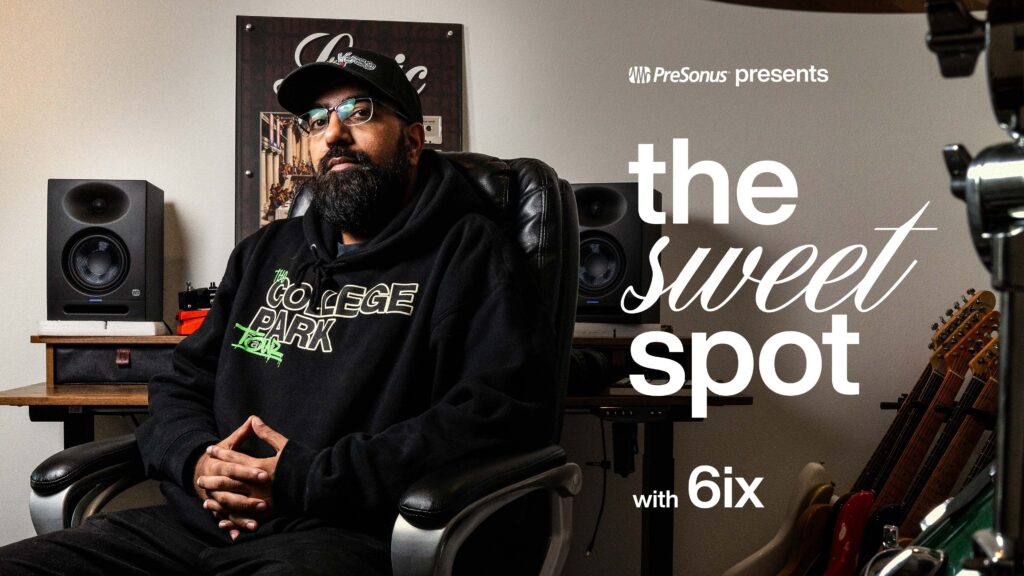
Logic’s Grammy-nominated producer breaks down his Sweet Spot.
Before he found success as an avant-garde hip hop producer, 6ix was just 30 units shy of a degree in neurology and physiology at the University of Maryland. But inches from the finish line and with “no plans of doing music career-wise,” 6ix’s life took an unexpected turn when he met Bobby Hall, aka Logic, at a beat battle.
“There would be these beat battles that I would do with my boy, Owen, and we ended up winning them all. I was like, ‘damn, there might be something here,’ and that’s when I met Logic.” From the outset, their creative connection was undeniable: “The first day I met him, he was like ‘you’re gonna be my producer.’ I remember dropping out of school, and then I moved to LA like 3 days later. I just stuck with my gut, and it worked out.”
In the 15 years since, the Grammy-nominated 6ix has gone on to produce 8 full-length records for Logic and has worked with Drake, 21 Savage, Khalid, Dizzy Wright, Sylvan LaCue, and more. “Being an Indian dude in this space, I wanna show people that it’s possible. That you don’t gotta follow the same route every time. Like, you don’t gotta be a doctor or engineer or whatever. It’s possible. Like, if I can do it, anybody can do it, really.”
Watch this episode to hear 6ix’s origin story and see how he uses the Eris Studio 5 Monitors and Sub 8BT Subwoofer to dial in his Sweet Spot.
In this episode of The Sweet Spot, 6ix talks about his origins, creative philosophy, and songwriting process.
“What really got me into music as a kid was probably my dad and my uncle,” he says. “There’s something about tapping into what I loved growing up that kind of relieves all pressure for me and I get back into that mindset of doing it for fun.” And for 6ix, a critical part of that mindset is keeping it simple: “I’m a big proponent for simplicity [because] it really lets the artist shine and lets the fans connect to what they’re really saying…Sometimes all it takes is a kick, snare, hat, a sample chop, or a dope piano or Rhodes part, and a bassline.”
When it comes to gear, the Eris 3.5 studio monitors and Sub 8BT subwoofer give 6ix the low-frequency foundation he needs for his bass-heavy beats: “Having good speakers is very important for me, especially for my low end. That’s why I like these Eris studio monitors so much. I just plugged them in straight up, and the levels were perfect. Everything is super accurate. I can hear the kick and I can hear the bass in two different spaces. I could mix full records on these speakers, just because everything is leveled and in place. I’m really impressed with how these sound.”
Any final words of wisdom? “I like the simple process. I’m at a point in my career where I’m having fun just making music that I wanna make at the crib, at the house. I feel comfortable here and I can just be my total self, and that’s my Sweet Spot.”
PreSonus products used: PreSonus Eris Studio 5 Monitors and Sub 8BT.
Check out the all-new family of Eris Studio Monitors and watch the rest of our Sweet Spot series here.
The Sweet Spot with Multi-Platinum Producer Warren Huart
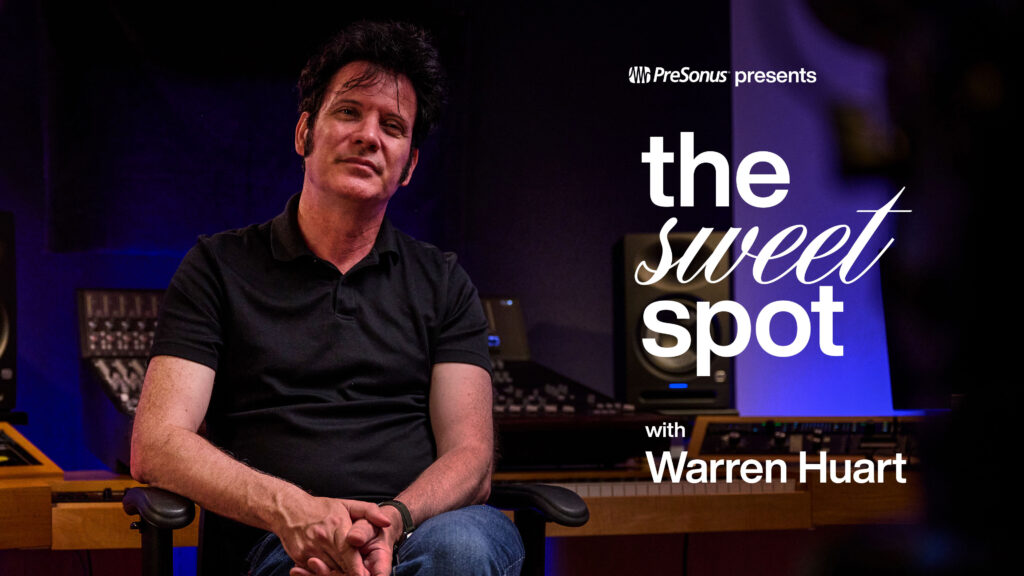
The Grammy-nominated multi-Platinum producer breaks down his Sweet Spot.
From the studio with chart-topping artists like Aerosmith and The Fray, to empowering 700,000+ subscribers on his world famous YouTube channel, Produce Like A Pro, producer and engineer Warren Huart is a multi-platinum prodigy with a deep passion for audio education and DIY ethics.
Warren’s impressive resume carries some serious weight – but he hasn’t let it cloud the air of what really matters: the music. Check out this episode where he discusses how he’s happiest when working with an artist he can co-write with, produce, play instruments, engineer, and mix, all while being able to achieve great sound from relatively inexpensive gear like the new PreSonus Eris Studio Monitors.
Long before the platinum certifications and star-studded CV’s, Warren got his professional start at just 16 years old when he left home to join a funk band. “I’ve been doing music professionally my whole life, and I learned to record out of necessity. I started on 4 track cassettes, moving into ADATS, and eventually into the earliest DAWs.”
His passion for educating others is a direct result of his own DIY educational path: “I started the YouTube channel purely and simply to connect to people. Between the beginners and the incredibly successful there’s a massive, massive gap there. So I came in to make it all make sense.” And now, the Produce Like A Pro YouTube channel is packed with the kind of educational content he wishes had been available when he was still learning: “I realized I had no advantages when I started. I never went to school for this and that is what most people are facing these days. I wanted to illustrate how you could do it by just working hard at your craft.”
When it comes to mixing, “a good pair of monitors is paramount. For me, I want two things: I want detail in the mid-range so I can get in there and mix everything, but I also want an additional, extended low end that you can now get in smaller speakers.” And the newly-redesigned Eris studio monitors deliver both at a shockingly affordable price point – which is crucial for Warren and his audience.
For Warren, accessibility is everything: “Like PreSonus, I believe very strongly in the democratization of the music industry. It has been one of the most important things for us, because now we’re able to access incredibly inexpensive, great-sounding equipment.” And in spite of having near-limitless access to any audio equipment under the sun, Warren is a huge fan of thoughtfully-priced products that punch well above their weight, like the PreSonus Eris Studio 8 Monitors and Sub 8BT: “Despite the fact I’m sitting in front of some relatively expensive equipment, 90% of my life is spent on speakers that are about $300. Bravo to PreSonus for producing a pair of speakers that’s really gonna kick down some doors.”
Any final words of wisdom? “I’m at my happiest when I’m working with an artist that I can co-write with, produce, play instruments, engineer, mix. For me, that is my Sweet Spot.”
PreSonus products used: PreSonus Eris Studio 8 Monitors and Sub 8BT.
Check out the all-new family of Eris Studio Monitors and watch the rest of our Sweet Spot series here.
